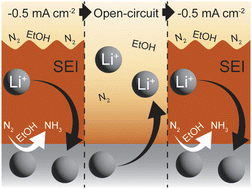2023-12-06 カリフォルニア大学リバーサイド校(UCR)
◆研究チームは「自己相互作用ダークマター」(SIDM)理論を提唱し、このダークマターは銀河の中心で互いに強く衝突することで現れると報告しています。具体的に、極端な密度を持つ楕円銀河のダークマターハローと、超拡散銀河の低密度なダークマターハローの2つの異なる謎を同時に説明できる可能性が示唆されました。
◆SIDMは従来のダークマター理論(CDM)に挑戦し、ダークマターが予想以上に複雑で活気に満ちている可能性があります。これは宇宙構造形成の高分解能シミュレーションに基づく研究であり、天文学的観測とコンピュータシミュレーションの力を組み合わせ、今後の天文観測データに期待が寄せられています。
<関連情報>
- https://news.ucr.edu/articles/2023/12/06/new-dark-matter-theory-explains-two-puzzles-astrophysics
- https://iopscience.iop.org/article/10.3847/2041-8213/ad0e09
低質量ハローの極端な多様性に対する自己相互作用ダークマターの解決策 A Self-interacting Dark Matter Solution to the Extreme Diversity of Low-mass Halo Properties
Ethan O. Nadler, Daneng Yang, and Hai-Bo Yu
The Astrophysical Journal Letters Published 2023 November 30
DOI:10.3847/2041-8213/ad0e09

Abstract
The properties of low-mass dark matter (DM) halos appear to be remarkably diverse relative to cold, collisionless DM predictions, even in the presence of baryons. We show that self-interacting DM (SIDM) can simultaneously explain observations of halo diversity at two opposite extremes—the inner density profile of the dense substructure perturbing the strong lens galaxy SDSSJ0946+1006 and the rotation curves of isolated, gas-rich ultradiffuse galaxies (UDGs). To achieve this, we present the first cosmological zoom-in simulation featuring strong DM self-interactions in a galaxy group environment centered on a 1013M⊙ host halo. In our SIDM simulation, most surviving subhalos of the group-mass host are deeply core-collapsed, yielding excellent candidates for the observed dense strong-lens perturber. Self-interactions simultaneously create kiloparsec-scale cores in low-concentration isolated halos, which could host the observed UDGs. Our scenario can be further tested with observations of DM structure and galaxies over a wide mass range.


